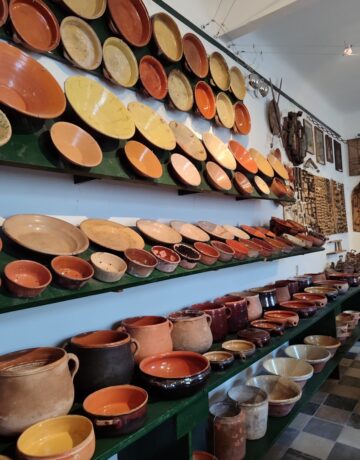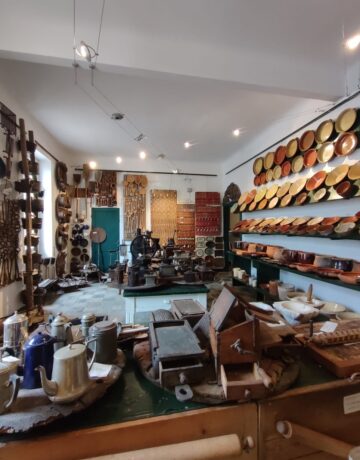Household Area
 In this room is represented the domestic life before the arrival of electricity. Families were larger than they are today, only after the Second World War women began to work, even though housework remain in any case their responsibility.
In this room is represented the domestic life before the arrival of electricity. Families were larger than they are today, only after the Second World War women began to work, even though housework remain in any case their responsibility.
At the end of 1800’s Bardineto had about 1,155 resident and in the whole province a quarter of the inhabitants were still living thanks to agriculture and breeding. Even in the past, as well as today, the house reflected the social level of the family that lived there, and the organization of the space reflected its family structure, hierarchies and economic condition.
There was no water from public pipes so it had to be drawnet from the well or public fountain and rainwater was not channelled; garbage was thrown into pits dug in the ground.
Given that, the sewage systems did not yet exist, the so-called cesspools were used and therefore often the water was not potable, due to contamination by fecal and urinary substances present in the soil. It was precisely due to the lack of sewage systems that, between 1835 and 1911, a terrible cholera epidemic repeatedly spread, ultimately causing the death of a million Italians.
By the late 19th century, only half of Italian municipalities had potable water pipelines and more than 77 percent had no sewers.
It was common for many people to live in few square meters houses with a room on the ground floor that served as a kitchen and where people lived for most of the day and one upstairs where they usually slept together. Even in the stable, domestic activities often took place, chatting; women sometimes mended or spun wool.
You have to approach this room, thinking that before throwing anything away, they once had to think about how they could repair it or reuse it in another way.

Walking through the room, clockwise, we find a series of ancient terracotta pots (pignatte), among the most particular you can see the one used to store eggs in lime (four parts water and one part lime allowed the eggs to be preserved formonths), still soiled with white colour inside; the pots with holes were used to make homemade cheese allowing the whey to come out of the curd. Then, you can see some pots with a thickness positioned at half height, that allowed to insert them directly inside the circles of the stove.
Continuing the visit you can find the collection of:
– irons with different functions: charcoal, gas or simple to heat on the stove;
– oil lamps;
– graters, (note those derived from old hoes which are no longer usable and which have been pierced with a hot iron);
– coffee-makers;
– coffee mills;
– pans for chestnut;
– iron hooks for hanging the pot on the flame;
– various types of cookware;
– pewter cutlery (an alloy composed mainly of tin with the addition of other metals such as copper, bismuth and antimony, in some cases also containing lead now considered toxic), both domestic and external use;
– meat grinders.
Bibliografy:
https://www.150anni.it / ISTAT historical series
